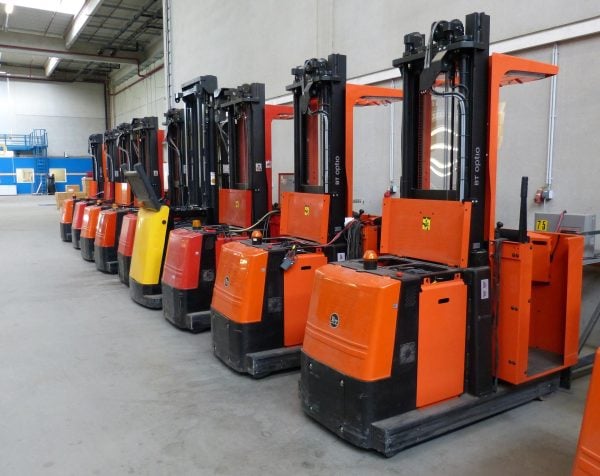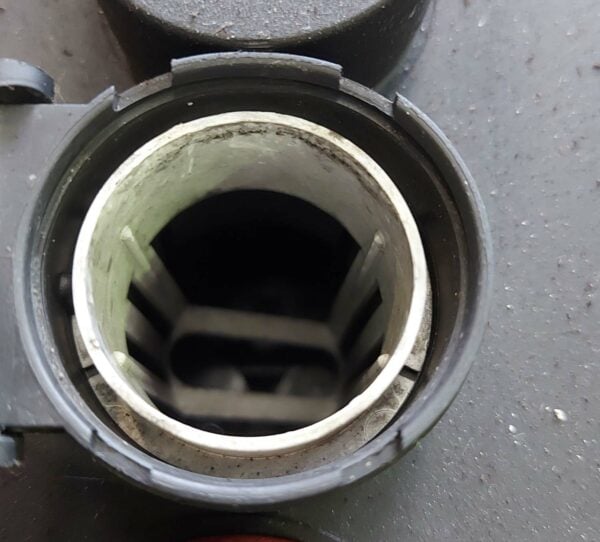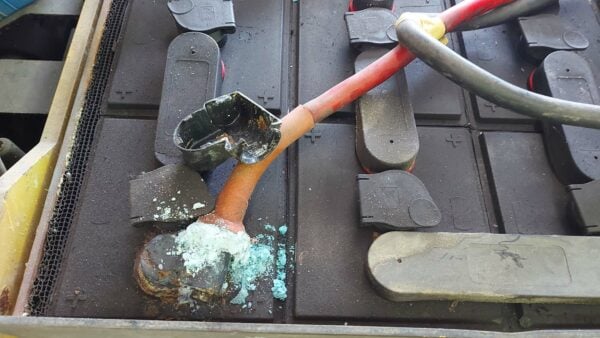With the right care and maintenance battery-powered forklifts can be recharged many times, and the batteries will last several years. It’s important to follow the manufacturer’s recommendations for charging. You’ll need to know this process as part of having either a forklift operator’s certificate or a walkie or jiffy operating certificate.
Batteries are usually recharged at the end of the day or end of the shift, but preferably when the charge is between 20-30% otherwise the capacity of the battery can be prematurely reduced. Continuing to deplete the battery past 20% reduces its lifespan, while charging the battery while it’s still above around 30% also reduces its lifespan. Each battery can accept around 1500 charges and it doesn’t distinguish between a half-charge and a full charge, or where you charge it from.
Choosing the wrong charging method will ultimately cost more money and negate the benefits of having a battery-powered forklift.
There are four methods for recharging, depending on the type of forklift and the type of battery:
- Plug in the forklift and wait until the battery is recharged – this works best where the company is running a one-shift operation as the battery can charge overnight (or during the day if it’s used at night). This is usually only with forklifts that have lithium-ion batteries
- Swap the battery – this is best when the forklift is constantly used across multiple shifts. The battery is removed and a fully charged replacement is put in its place. This is the usual case with lead-acid batteries.
- Fast charging – this is where booster charges are given during breaks so that the forklift can run for longer until it’s completely depleted; it may be able to run indefinitely if the breaks are long enough. It is much harder on the battery as it will be incompletely discharged and charged. It’s recommended that the battery is put through a full discharge/recharge cycle every week to equalise the battery. Fast charging may be against the terms of the battery’s warranty.
- Opportunity charging – the same principal applies as fast charging, but the amperage used is around 50-60% of fast charging. This can also decrease the battery’s life (bear in mind what we said above regarding each battery having around 1500 charges), so check with the manufacturer. The charger will be different to a fast charger, unless the amps are able to be changed on the charger. Opportunity charging is usually only recommended with lithium-ion batteries, not lead acid batteries.
Safety
Forklift batteries are heavy. If you’re doing a battery swap, use the right equipment to extract and transport the batteries. You may need an electric pallet jack or another forklift to extract the battery and take it to the charging area, and to install the new battery as they can weigh over 1000kg.
Choose appropriate clothing. Steel-capped boots, safety glasses and gloves are the minimum PPE. Remove metallic jewellery and tie your hair back.
Always charge or swap batteries in a designated area where there is a wash station in case there’s accidental contact with battery acid. You may want to do a spill kit course so you know what to do if there’s a spill.
Don’t recharge or replace the battery while someone is sitting on the forklift.
How to charge a forklift battery
While scheduling set charging times might be more convenient, there is the risk that the battery life will be shortened if the battery isn’t depleted to 20-30%. Check with the battery manufacturer for the ideal charge remaining before the battery is recharged.

Check the equipment
Are the charger cables in good working order? Check the connectors aren’t damaged or cracked
Are you using the right charger with the right power output? Typical voltages are 36V, 48V and 80V.
Check the water once a week if you’re using lead-acid batteries. Don’t add water until after the battery is charged. If you’re using lithium-ion batteries, no water is required.

Clean the battery once a month as chemical build-up can corrode the tray and void the warranty.

However, do not use water to wash the corrosion off the terminals as the corrosion can end up inside the battery, on the components of the forklift (which could cause additional corrosion), on the floor around the forklift and in the drains
Charging process: lithium-ion batteries
- Park in a designated place and turn the forklift off.
- The forklift must not be carrying a load and the operator must not be on the forklift
- Wear the right PPE
- Make sure the charger is turned off
- Plug the charger into the forklift then turn it on
- Don’t interrupt the charge – wait until it’s finished. This could take eight hours. Don’t overcharge the battery.
A lithium-ion-powered forklift is likely to last 7-8 hours.
Charging process: lead-acid batteries
- Park in a designated place and turn the forklift off
- The forklift must not be carrying a load and the operator must not be on the forklift
- Wear the right PPE – batteries may contain sulphuric acid which can cause severe burns
- Extract the batteries from the forklift using appropriate equipment – an electric pallet jack or another forklift, for example
- Place the battery on the charging rack until it is recharged; don’t overcharge the battery
- Leave the battery for the cooling down period, as defined by the manufacturer
- Top up any electrolytes
- Transfer the battery back into the forklift.
A lead-acid-powered forklift is likely to last around 6 hours, plus lead-acid forklift batteries are more labour-intensive to charge and change. If you have a large fleet, it can make sense to upgrade to lithium-ion forklifts as there are cost savings.
Battery storage and conditions
Once the temperature rises above 30C or drops below freezing point, the battery life of regular batteries drops as much as 50%. If you’re working in extreme conditions, get batteries designed for the task.
Batteries must regularly be equalised to rebalance the concentration of battery acid in the cell. The battery acid can become more concentrated at the bottom of a cell, meaning the water and acid are stratified (in layers) and that makes it less able to hold a charge.

